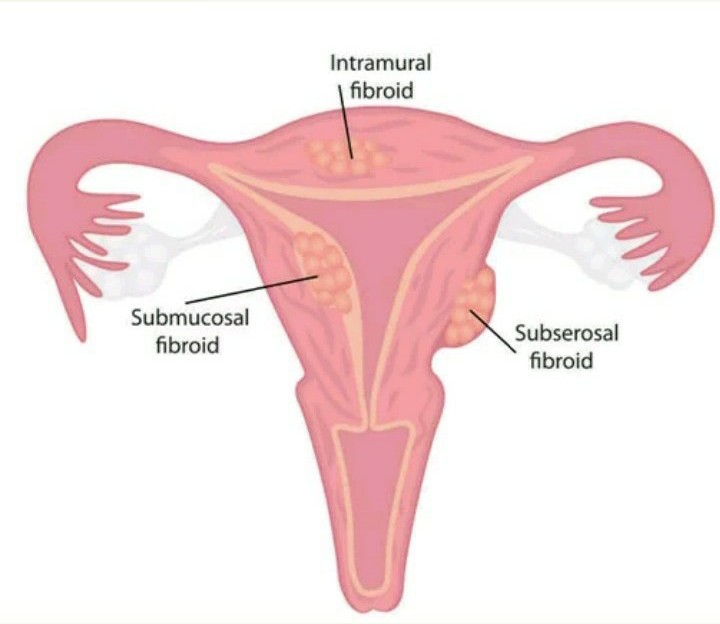By The WebPamphlet
Fibroid is a serious medical condition, prevalent in women. They are tumors which grows and develops in or on a woman’s uterus. These tumors sometimes, may tend to become quite enormous in size and cause severe abdominal pain, abdominal swelling and heavy periods. In some women, they cause no signs or symptoms at all. The growths are typically benign, or noncancerous.
The causes of fibroid, however, are currently still unknown to health researchers. According to research, about up to 80 percent of women have them by the age of 50. However, most women don’t have any symptoms and may never know they have fibroid.
Types of fibroid
The type of fibroid a woman develops depends on its location in or on the uterus.
Intramural fibroid
Intramural fibroid appears to be the most rampant or common type of this disturbing medical condition ― fibroid. These types appear within the muscular wall of the uterus. Intramural fibroid may grow so enormous to the point of stretching your womb.
Subserosal fibroid
Subserosal fibroids are known to form on the outside of your uterus, which is called the serosa. They may grow large enough to make your womb appear bigger on one side.
Pedunculated fibroid
Subserosal tumors can develop a stem, a slender base that supports the tumor. When they do, they’re known as pedunculated fibroid.
Submucosal fibroid
These types of tumors develop in the middle muscle layer, or myometrium, of your uterus. Submucosal tumors aren’t as common as the other types.
Causes fibroid
It’s currently still unclear why fibroid develop, but a bunch of factors are pointed to influence their development..
Hormones
Estrogen and progesterone are the hormones produced by the ovaries. They cause the uterine lining to regenerate during each menstrual cycle and may stimulate the growth of fibroid.
Family history
Just like other medical conditions like seizures, diabetes etc; fibroid may run in the family. If your mother, sister, or grandmother has a history of this condition, you may develop it as well.
Pregnancy
During pregnancy, there’s an increase in the production of estrogen and progesterone in the body. These two hormones are pointed to help the flourished growth of Fibroid in the body.
Here are the outlined risk increasing factors for fibroid, that is, women who have one or more of these factors are more likely to develop fibroid:
1. Pregnancy
2. A family history of fibroid
3. Age of 30 or older
4. Africans
5. A high body weight
Symptoms of fibroid
The symptoms you notice depends mostly on the number of tumors you have, as well as the location and size in your body. For instance, submucosal fibroid may cause heavy menstrual bleeding and trouble conceiving.
If your tumor is very small or you’re going through menopause, you may not have any symptoms. Fibroids may shrink during and after menopause. This is because women undergoing menopause are experiencing a drop in their levels of estrogen and progesterone, hormones that stimulate fibroid growth.
Symptoms of fibroid may include:
– Heavy bleeding between or during your periods that includes blood clots
– Pain in the pelvis or lower back
– Increased cramps during menstruation
– Frequent urination
– Noticeable pain while having sex
– Longer lasting menstruation
– Pressure or fullness in your lower abdomen
– Noticeable abdominal bloating or swelling
Read More: https://www.webpamphlet.com/2019/09/types-symptoms-causes-all-you-need-to.html

 Music3 months ago
Music3 months ago
 Music3 months ago
Music3 months ago
 Music3 months ago
Music3 months ago
 Music3 months ago
Music3 months ago
 Lyrics3 months ago
Lyrics3 months ago
 Video2 months ago
Video2 months ago
 Music1 month ago
Music1 month ago
 Music1 month ago
Music1 month ago













